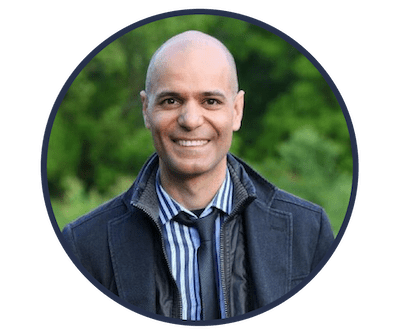APTEI: Thoracic Outlet Syndrome (TOS) - Diagnosis & Management Simplified!

APTEI: Thoracic Outlet Syndrome (TOS) - Diagnosis & Management Simplified!
This course includes
The instructors
Overview
The aim of this short online course is to review the classification system for diagnosing TOS and discuss twelve potential self-management options for treating this sometimes challenging condition. In rare cases, those who are unresponsive to conservative care may require further medical investigations and a surgical consult.
The prevalence of TOS continues to be very controversial with strong opinions at both ends of the spectrum where some have claimed it is over-diagnosed while others claim it is under-diagnosed. This course aims to take a balanced approach based on the best available evidence.
Learning Objectives
In this online course, you will learn:
- The most common etiologies of TOS
- The classification of TOS based on clinical findings and medical tests
- To question the use and the value of traditional and common TOS tests
- Three simple clinical tests that will help you confidently identify TOS (Note: None requiring the palpation of a faint pulse)
- 12 self-management options for TOS
- When a surgical consult is required for TOS
- The role of placebos & nocebos in the management of TOS
Audience
This course is for all healthcare providers who have ever questioned the existence of TOS in their patients presenting with neck, and upper extremity symptoms. This course is for all healthcare providers who wish to offer their patients presenting with signs & symptoms of TOS independent self-management to optimize their recovery.
The instructors

PT, D.SC.PT, M.PHTY, B.SC.PT, FCAMT
Bahram is a physiotherapist and founder of the Advanced Physical Therapy Education Institute (APTEI). He's taught 1000+ continuing education courses to healthcare professionals across Canada & internationally.
He has instructed over one thousand post-graduate orthopaedic and pain science courses and has been a guest presenter at several physiotherapy and medical conferences across Canada and internationally.
His primary clinical approach is to identify relevant functional impairments and determine the best self-management strategy to maximize patient independence.

Material included in this course
-
COURSE HANDOUTS
-
TOS: Evaluation options
-
TOS: Management options
-
EVALUATION
-
Lesson 1: Classifying TOS
-
Lesson2: Traditional tests
-
Lesson 3: Clinical Tests for Identifying Neurogenic TOS
-
Feedback on the evaluation & classification of TOS
-
MANAGEMENT
-
Lesson 4: Conservative Management Options for TOS
-
Lesson 5: Surgical Options for TOS
-
Lesson 6: PLACEBOS & NOCEBOS
-
Neural Flossing Summarized
-
Feedback on the management of TOS
-
SUMMARY
-
Summary
-
Feedback on the TOS course
-
Do you like this course?
Patient exercises included in this course
-
Neural Flossing: Ulnar Nerve
-
Neural Flossing: Radial Nerve
-
Neural Flossing: Median Nerve
-
Upper extremity neuro dynamic "pizza pass"
-
Thoracic Self Extension in Sitting
-
Lower Neck: Self Extension with Hands
I learned several TOS tests at school already, can't I just use those to identify TOS?
Although commonly described in literature and textbooks, the validity of the common TOS clinical tests has been questioned; Roos, Allen and Adson’s tests have been shown to be invalid, contributing to misdiagnosis of TOS as they can be negative in those with TOS and positive in asymptomatic individuals.
I already know that I need to stretch the scaleni and the pectoral muscles for those with TOS. Is there more?
I am in fact against static stretching of these muscles. If the brachial plexus is sensitized, then the last thing it needs is to be passively over-stretched. PLEASE, do NOT stretch sensitized nerves... it is similar to prescribing hamstring stretches to those with "sciaitica"... despite it worsening their symptoms.
Is it true that specific exercises or manual therapies for TOS help “correct posture”, “stretch muscles”, “open up the thoracic outlet”, “improve scapular mechanics”, etc.
There is a serious lack of evidence that any of those outcomes actually occur. There is no evidence that exercises alter posture. There is no evidence that exercises actually change cervical, shoulder, or scapular biomechanics.
Why do exercises help TOS symptoms?
Hold on! That is exactly what I will attempt to fully explain in this course. Please register for the course by clicking the 'Buy course' button. You must be signed into Embodia in order to purchase the course. Creating an account on Embodia is free!
This course has exercises. Can I prescribe them to my patients?
Yes, exercises included in courses or resource packages on Embodia can be prescribed directly through the Embodia platform. A Tier 2 or 3 Membership is required to prescribe exercises. These memberships include a range of other features. You can learn about home exercise programs (HEP) on Embodia here, and about memberships on Embodia here.